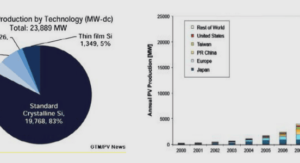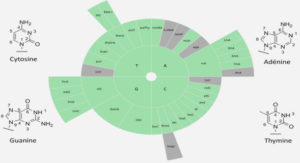General principle of GNSS
GNSS systems worldwide
In GNSS system, three segments are necessarily correlated to finally obtain the desired coordinates. First there is the indispensable space segment in orbit, then the traditional components of the user segment on the ground, and finally the control segment which ensures the coherence of the whole.
The space segment consists of a constellation of several satellites in orbit, distributed between several planes, but the number of satellites in service at a specific date may vary depending on the operations decided by the control segment. The constellation is organized by 24 to 30 main satellites according to the system to ensure the global availability of GNSS systems, which implies having at least four satellites visible from the ground all over the world. There is always more satellites in orbit to maintain a complete coverage of these locations even in case of failure.
The control segment is composed of a network of several stations on Earth. It consists of a master control station (MCS) and control stations (CS) that monitor the satellite signals and upload new correction data to satellites. The CS takes care of the maintenance of the satellites as well as their good functioning.
The user segment concerns all the equipment and devices that receive the satellite signals transmitted from the spatial segment. These devices process GNSS signals in order to calculate their position or for specific applications. Since the deployment of the first constellation of satellites by the US military in 1978, the total number of GPS receiver is estimated at 3.6 billion in 2014; smartphones with integrated GPS are the most numerous with 3.08 billion followed by 260 million navigation devices for road applications.
Note that this thesis consists of the GNSS signal processing which is part of the user segment.
Satellite navigation systems continue to evolve, many systems are operational and others are under development. The four great GNSS systems (GPS, GLONASS, Galileo and BeiDou) provide a fully operational global coverage of almost the entire globe.
The work carried out in this thesis focuses only on GPS L1 C/A and L5 signals, and Galileo E1 and E5 signals which are transmitted in the L-band, especially in L1/E1 band (GPS L1 C/A and Galileo E1 OS signals) and in L5/E5 band (GPS L5 and Galileo E5a and E5b signals).
By using different GNSS signals, GNSS receivers are able to improve the main weaknesses of navigation systems such as availability (increasing the number of visible satellites to determine the receiver position), integrity (more reliable navigation messages), accuracy (several frequencies allowing better correction of certain errors) and electromagnetic vulnerability (use of different modulation techniques).
GNSS signals are heterogeneous because of some differences in principles on signal components, spectra, modulation type, navigation messages, time references, etc. Each system has its advantages and limitations depending on the application and the environment.
Moreover, it is really interesting to make a combined use of the three functional systems (GPS/Galileo/Glonass) making the GNSS receivers more robust and more accurate than the current receivers. Thus, the combined use of GNSS signals requires interoperability between the different systems.
GNSS signals structure
Some methods exist to multiplex multiple signals within the same communication channel. The most known multiple access technique is probably the Frequency Division Multiple Access (FDMA), which consists in subdividing a channel into several different frequency bands. There is also the Time Division Multiple Access (TDMA), where the strategy consists in temporally segmenting access to a communication channel. While in both cases the communication channel must be split, another method, called Code Division Multiple Access (CDMA), allows several transmitters to communicate simultaneously over the same frequency bands (Gerakoulis, 2001).
Before being transmitted, CDMA signals are generally modulated by a sinusoidal carrier. The two most commonly used modulations are the Binary Phase Shift Keying (BPSK) and the Frequency Shift Keying (FSK). BPSK modulation is generally preferred because it is easier to implement. A simple multiplication of the CDMA signal by the carrier is then required, hence the name of CDMA with spread spectrum by direct sequence (DS-CDMA – Direct Sequence CDMA). The FSK modulation produces a spectrum spread signal by frequency hopping (FHCDMA – Frequency Hopping CDMA). DS-CDMA modulation technique is used for GPS and Galileo systems which are used in this thesis (Galileo-OS-SIS-ICD, 2016; ICD-GPS-200, 2000). CDMA signals also offer some robustness against interferences and jammers. For more details about CDMA principles, please refer to (Bruno, 2007).
Signals transmitted from satellites to Earth have three essential components: a carrier, a spreading code and navigation data or navigation message. More details on GNSS signals structure are presented in (Avila-Rodriguez et al., 2008; Subirana, Zornoza et HernandezPajares, 2014).
GPS L1 C/A signals
The L1 C/A GPS signals are based on DS-CDMA modulation, a combination of CDMA techniques for multiple access and BPSK for carrier modulation. A clock with a frequency of 10.23 MHz is used on board the GPS satellites in order to synchronize the data and the spreading code. The rhythm of the data is 50 bps (low rate) and that of the spreading code is 1.023 Mcps (high rate). The data bits are thus combined with the spreading code (using a modulo-2 sum) before being multiplied by a carrier whose nominal frequency is 1575.42 MHz. The BPSK signal formed is finally amplified to a minimum power of 33 W and limited to a bandwidth of 20.46 MHz before being transmitted to the ground (Kaplan et Hegarty, 2006). Given the long distance of the satellites from the users, GPS signals have only about -160 dBW of power when received on the ground. Combined with ambient thermal noise, this corresponds to an SNR of the order of -30 dB (ICD-GPS-200, 2000).
CHAPTER 1 INTRODUCTION |





